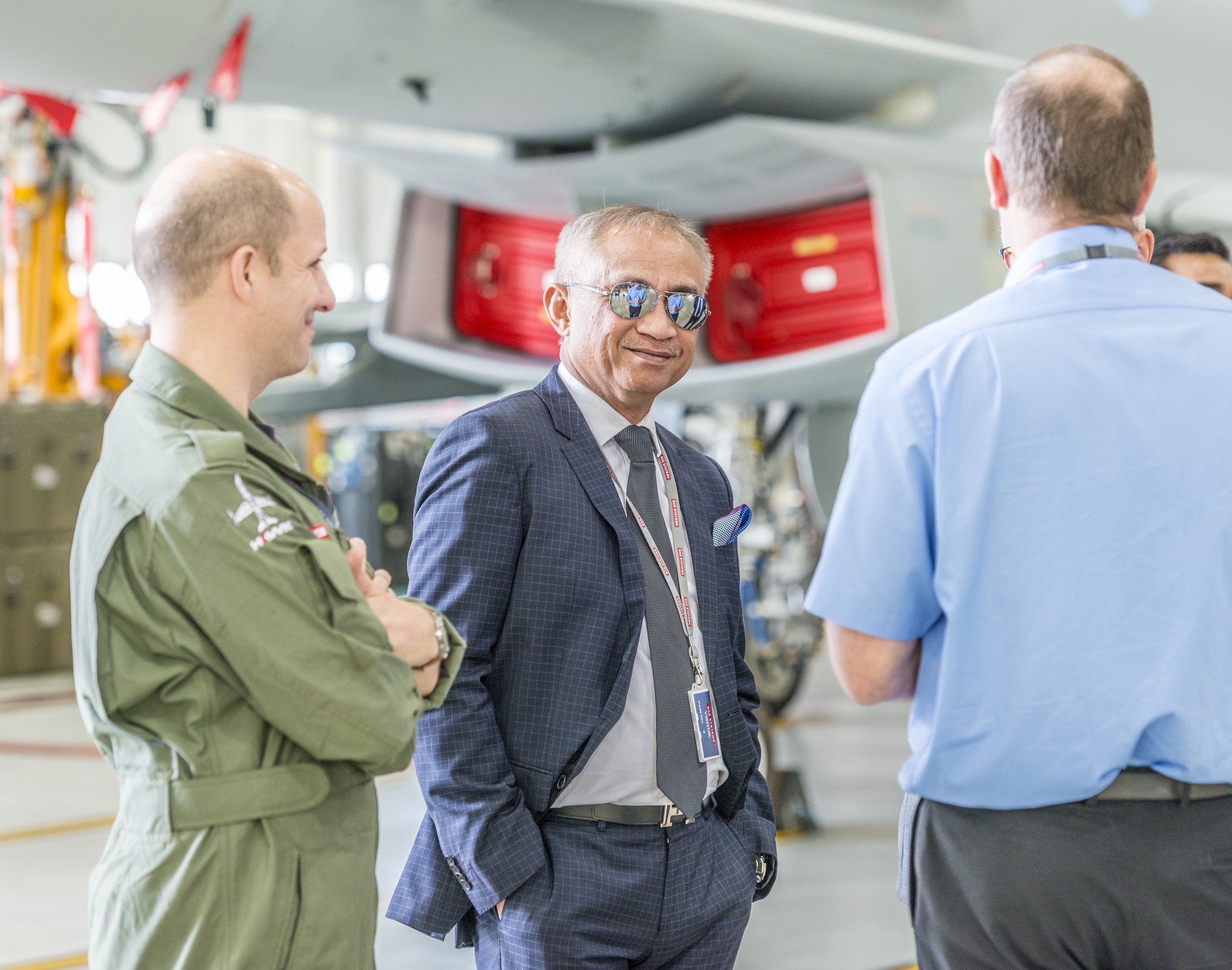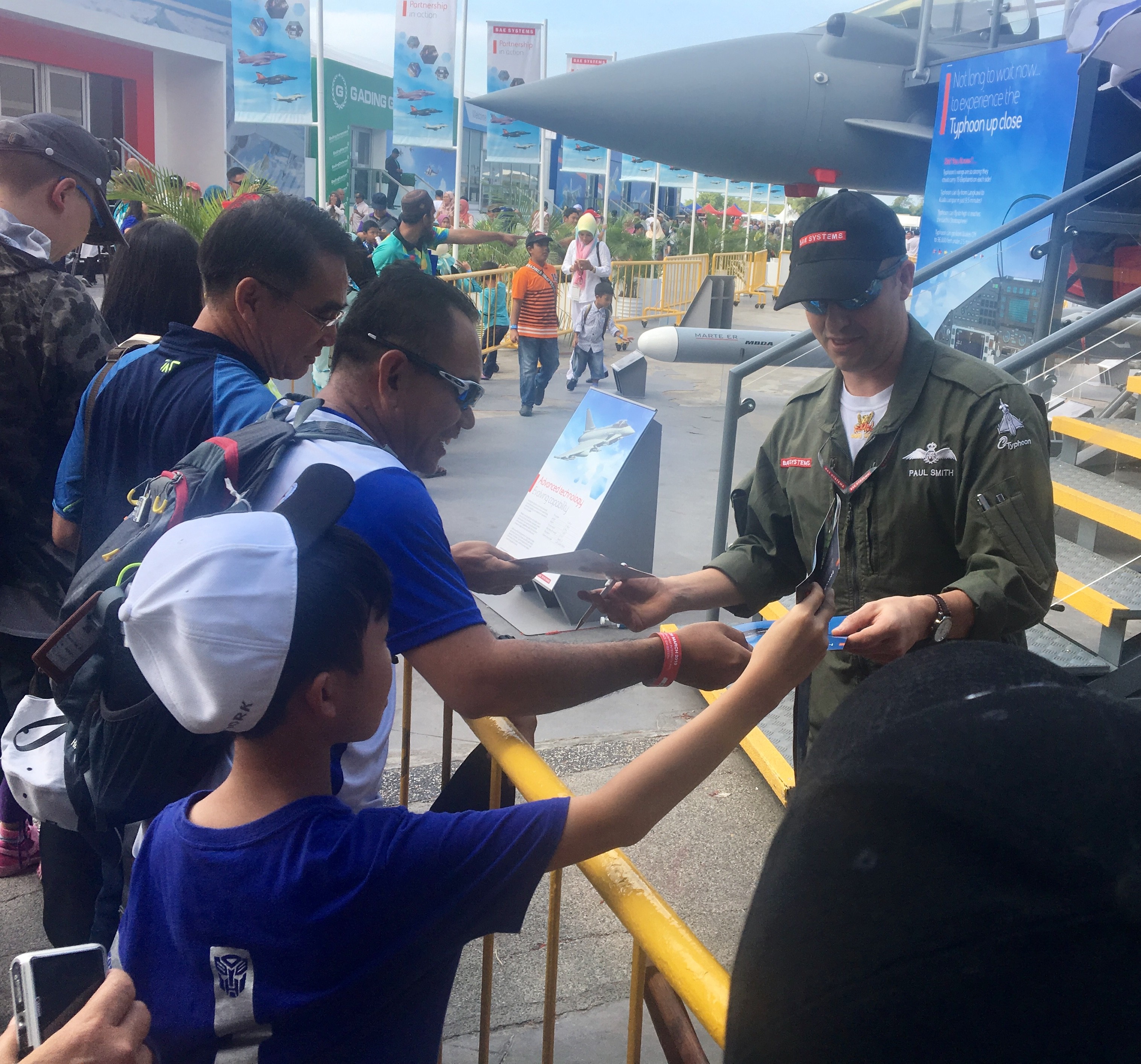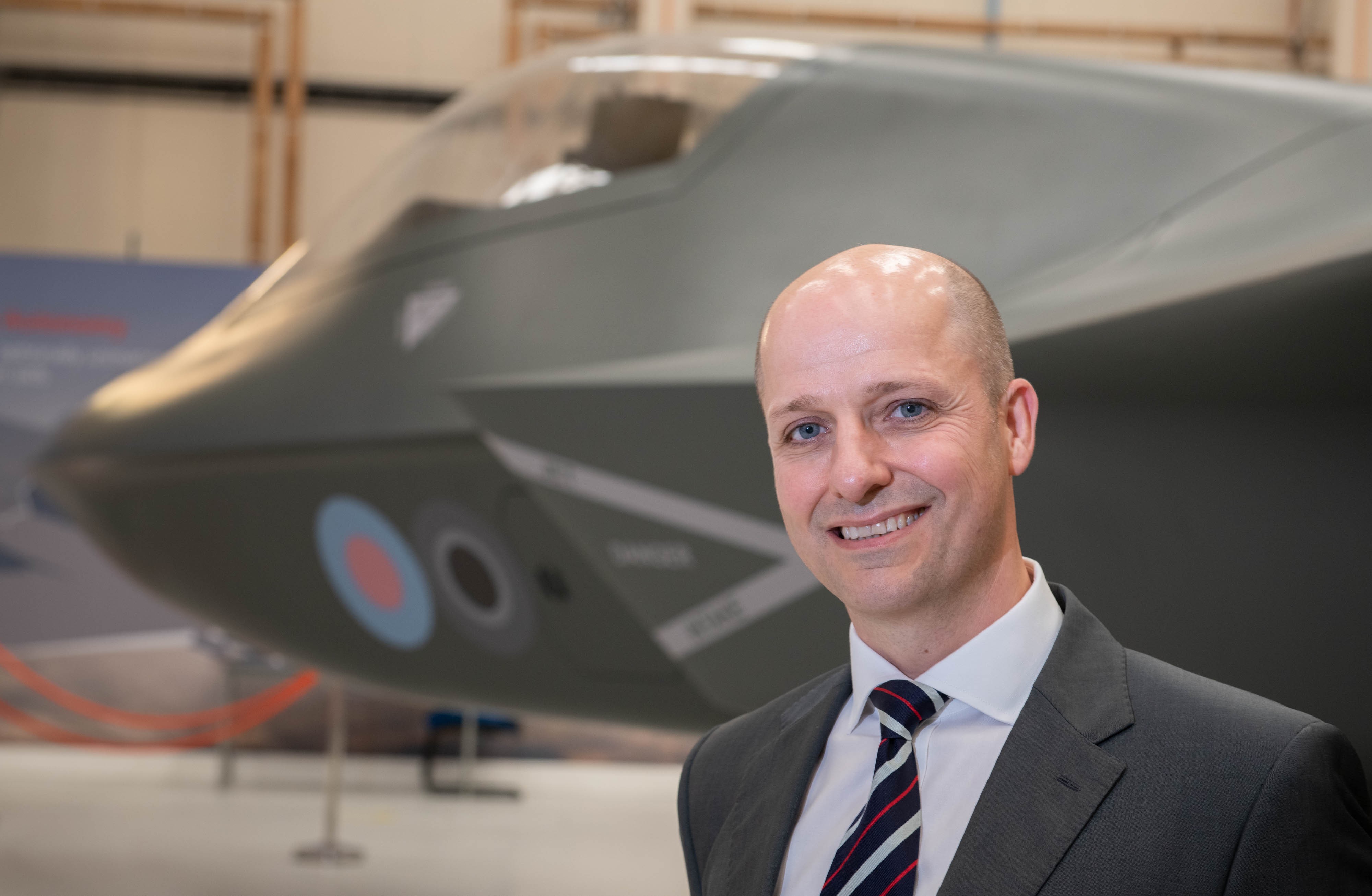A graduate and later instructor at the UK’s Fighter Weapons School, Paul taught fighter tactics and assessed the combat capabilities of his fellow pilots, before leaving the RAF and swapping his flying suit for a business suit. Today, he is BAE Systems’ Head of Business Development for European Campaigns.
So how was it moving from your Eurofighter to a flying desk?
I actually finished work in the RAF one Friday and by the following Monday morning, I was sitting at my new desk in the export department of Eurofighter Jagdflugzeug GmbH. It was a rapid but exciting switch. Getting an insight into how the industry partners come together and produce the aircraft was fascinating. I'd had a taste of industry previously whilst working on operational test and evaluation with the RAF, but this was an up close and detailed view of how everyone works together. So that was fascinating.
Working with Italians, Germans and Spaniards day in, day out, was extremely enjoyable and rewarding. I loved the whole European dynamic and lifestyle in Bavaria that I found interesting from a cultural as well as professional perspective. Most importantly, I was lucky to make many friends and professional relationships from across the partner nations that I maintain to this day.
Were there any elements that you found difficult to adjust to?
Yes. For 23 years, my life was flying fast jets. It is an indescribably stimulating mental and physical challenge, so to leave the cockpit was a wrench. It was also an incredible privilege to be involved so early in the operational life of Typhoon. I was an executive officer on the first frontline squadron at its formation. At the same time, working in industry has presented a new and different challenge.
I'm fortunate now as I'm in the Air Force Reserve and get to impart the joys of flying to air cadets and RAF university students.
I teach them the basics of flying. It's a different kind of raw flying and a real pleasure. And my role at BAE Systems means I jump in the back of Typhoon from time to time to maintain contact with the latest variant of the product.

Paul Smith (left)
How did your experience of being a pilot shape your interactions with your business colleagues?
I am able to pass on an understanding of how Typhoon is used, although that is less about the flying and more the operational use context. My colleagues at Eurofighter and BAE Systems ask questions like: why is this useful; why is this design feature important; when you're in the cockpit how do you interact with this information; what are your thought processes?
As a pilot, you are constantly making risk benefit assessments and that is a useful perspective to bring to design and airworthiness discussions. Safety is paramount, but our war fighters need the latest capabilities when sent on operational missions in the Baltic or elsewhere. Maintaining that healthy tension between operational capability delivery and safety is essential for our users.
Has your view of industry changed?
As a front line pilot you are far removed from the point of design or delivery, and because of that you have an incomplete picture of all the collaborative effort industry puts into capability delivery. Eurofighter is just a fantastic aircraft — easily the best thing I've ever flown. End of. But when you take the aircraft on operations or you are testing a new upgrade, there may be some aspects that you want to change. It then can be frustrating that it might take time to realise a design change for the frontline. As a fighter pilot you have to have a good engineering understanding of the various aircraft systems and their interactions. What you don’t necessarily understand is all the intricate delivery interdependencies.
However, when you are in industry you understand how all the design elements feed into a particular change and the impact on all different areas of the system. It’s a much deeper perspective.
We have built the safest multi-role fighter aircraft ever – that is backed up by any metric of the data. Why is that? Because between NETMA and industry we carry out a lot of work to make sure it’s safe. There is a huge amount of background checking, rig testing qualification and flight tests before it gets anywhere close to the operational front lines.
What can industry learn from incoming practitioners?
In my view, having an even broader pool of people to draw on with the right sort of operational experience would help make Eurofighter an even better weapons system. Incoming practitioners bring a unique understanding of the first, second, third order operational effects of design and engineering issues. That is true right across the operational spectrum from logistics to ‘spanner turning’ engineers as well as pilots.

What can our forces learn from industry processes?
Air forces are good at being decisive in an operational context. They make a decision move forward. In industry we're good at pulling in the data from a diverse range of areas and people and producing a measured and defined output.
What are key transferable skillsets?
Communication is one. It’s essential for pilots to speak with clarity and brevity. Part of the role is about getting across large amounts of often complex information with absolute clarity. It's a critical skill, especially in the fog of war. Briefings get you used to speaking in front of the harshest audiences and you’re not overwhelmed by speaking to large audiences. It's actually a very helpful skill in engineering and programme meetings too. It gives you the tools you need to piece together complex discussions, analyse and summarise the key elements. You are used to taking a step back and taking a broader strategic view.

What do you most enjoy about your industry role?
I love the international diversity of my colleagues and the intellectual challenge of working in the Eurofighter family; the variety of those challenges and the immediate changes in direction. One minute I can be working on the details of weapon integration or specific aircraft Mission Data values, the next directing a campaign strategy or supporting work trying to influence the UK’s combat air strategy.
The other thing that gives me a particular buzz are the times when you're working through a particular issue that leads to a specific design enhancement. Knowing that a few months down the line my buddies in our partner air forces will be flying on operations and the aircraft will be doing a better job for them thanks to a discussion that I played a small part in.